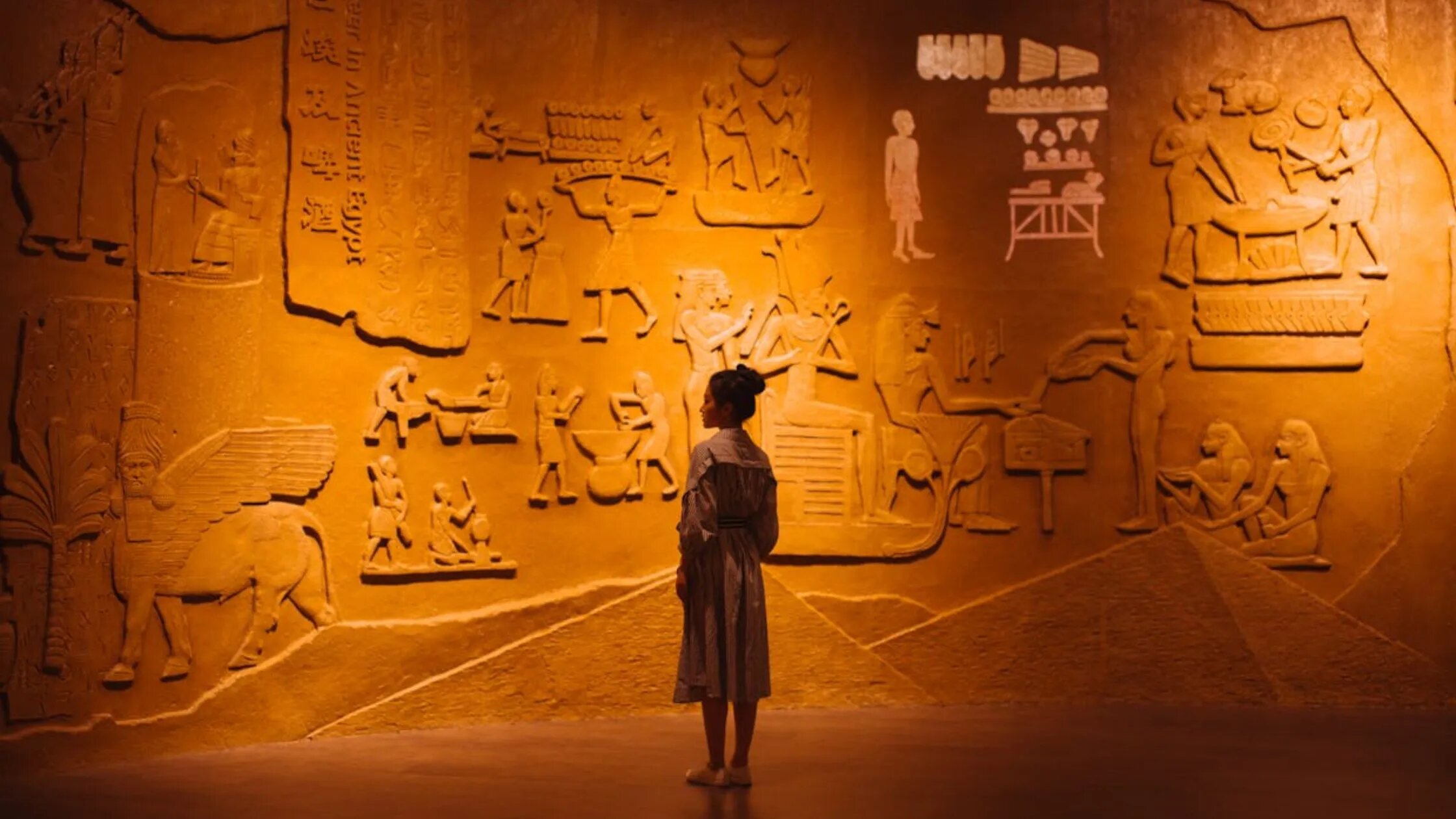Examining Ancient Artz offers a profound insight into the cultural, social, and religious dimensions of early societies. Each artifact, from intricate ceramics to monumental sculptures, narrates stories that span centuries. By delving into the evolution, forms, and ongoing relevance of Ancient Artz, we can appreciate its enduring influence on contemporary artistic expression and society at large. The term “Ancient Artz” encompasses a diverse array of creative practices across various civilizations, each contributing unique styles, techniques, and purposes to the global narrative of art.
The Origins of Ancient Artz
Long before written records existed, Ancient Artz served as a medium for social documentation, religious expression, and storytelling. Among the earliest forms of artistic expression are cave paintings, which provide invaluable glimpses into prehistoric life. These visual representations transcended mere imagery; they were methods of conveying complex ideas and narratives. The artistic manifestations of cultures evolved alongside their societies, developing distinctive characteristics shaped by their environments, available resources, and cultural values.
For instance, the art of ancient Egypt is deeply interwoven with its religious and spiritual beliefs. Egyptian artistry reflects their ideas about the afterlife, manifested in tomb paintings, sculptures of deities, and monumental constructions such as the pyramids. Similarly, Mesopotamian art, exemplified by the magnificent ziggurats and reliefs that adorned their cities, showcased the grandeur of their rulers and gods. Each civilization utilized art as a means to express cultural values, communicate ideas, and preserve their legacies for future generations.
The Influence of Religion on Ancient Artz
Religion significantly shaped the artistic landscape of ancient societies. Many artworks from these civilizations were intricately linked to their political and religious frameworks, depicting gods, goddesses, and mythological narratives. The belief in an afterlife, for instance, drove the construction of grand temples and tombs, including the iconic Great Pyramid of Giza in ancient Egypt. In this context, Egyptian funerary art aimed to facilitate a seamless transition into the next world for the deceased.
Greek art, too, was heavily influenced by religion, albeit in a distinct manner. Temples like the Parthenon were adorned with elaborate sculptures and friezes that depicted gods in human form, reflecting the complex relationship between the divine and human experience. The remarkable skill of Greek sculptors in capturing the essence of gods and heroes with striking realism continues to inspire contemporary artists and serves as a benchmark in the art world.
Materials and Techniques in Ancient Artz
The choice of materials used in Ancient Artz was often dictated by the natural resources available in each civilization's geographic region. For example, the Egyptians predominantly employed stone for their sculptures, allowing them to create monumental pieces that have endured through the ages. While stone presented challenges in manipulation, it enabled artists to craft lasting images of their deities and pharaohs, ensuring the preservation of their cultural heritage.
In contrast, the Mesopotamians frequently utilized clay, a more malleable material that was abundant in their environment. They produced intricately detailed clay tablets and ceramics, including the renowned cuneiform inscriptions—the earliest form of writing. Cylinder seals, crafted from clay and featuring complex carvings of various religious or mythological themes, were employed to authenticate documents and safeguard goods.
The Greeks, celebrated for their mastery of marble, produced lifelike sculptures that epitomized balance, harmony, and beauty. Notable artists such as Phidias and Praxiteles revolutionized the medium of sculpture, contributing significantly to the realistic representation of the human form and movement. Their techniques and philosophies became foundational elements in the development of Western art.
The Evolution of Artistic Styles
Ancient Artz was dynamic, evolving in response to changes in political, religious, and social structures. For over three millennia, art in ancient Egypt exhibited remarkable consistency, adhering to strict conventions that mirrored their highly structured society. Egyptian artists utilized a formulaic approach to depict the human figure, employing profile views for heads alongside frontal views for bodies, which ensured a recognizable representation that conveyed social order.
Conversely, ancient Greek art underwent significant transformations, especially during the Archaic, Classical, and Hellenistic periods. Early Greek art was influenced by both Egyptian and Near Eastern traditions, yet as time progressed, Greek artists shifted towards naturalism, emphasizing the human figure in motion. Iconic works, such as the Discobolus (The Discus Thrower) and sculptures by Myron and Polykleitos, vividly illustrate this transition towards the idealized portrayal of the human physique.
Cultural Significance of Ancient Artz
Art in ancient societies was far more than mere decoration; it played a pivotal role in defining cultural norms, reinforcing social hierarchies, and disseminating political and religious ideologies. In ancient Egypt, for example, art was instrumental in legitimizing the divine authority of pharaohs, thereby affirming their role as intermediaries between the gods and the populace. Monumental structures like the Sphinx and the towering sculptures of Ramses II served as visual proclamations of royal power and divine favor.
In ancient Greece, art fostered civic pride and a sense of community. The grandeur of Greek temples and public buildings reflected the ethos of the city-state, or “polis.” Sculptures of deities, heroes, and notable figures adorned public spaces in Athens, serving as both inspiration and celebration of individual and collective achievements.
The Enduring Legacy of Ancient Artz
The influence of Ancient Artz continues to resonate in modern creative practices. The Classical Greek style, with its emphasis on proportion and symmetry, laid the groundwork for subsequent Western art movements, notably during the Renaissance. Artists such as Michelangelo and Raphael sought to emulate the mastery of form and movement exemplified by their ancient predecessors.
Moreover, the visual language of ancient Egyptian art has permeated modern design and fashion. The Art Deco movement of the early 20th century, characterized by geometric shapes and bold lines, drew heavily on motifs from ancient Egypt. Iconic symbols such as the pyramids, the Eye of Horus, and the masks of pharaohs remain captivating to contemporary audiences, demonstrating the lasting appeal of Ancient Artzistic traditions.
Frequently Asked Questions (FAQs)
What is Ancient Artz?
Ancient Artz encompasses the creative achievements of early civilizations across various media, including sculpture, painting, and architecture, reflecting their cultural, religious, and social ideals.
How did religion influence Ancient Artz?
Religion played a crucial role in shaping the concepts and themes depicted in Ancient Artz. Many artworks were created to honor deities or represent religious rituals and beliefs.
What materials did ancient civilizations use for art?
The materials varied by region; Egyptians primarily used stone, Mesopotamians favored clay, and the Greeks excelled in marble and metalwork.
How has Ancient Artz influenced modern culture?
Ancient Artz has profoundly influenced modern art and design, particularly during the Renaissance revival of Classical Greek forms and the ongoing fascination with Egyptian aesthetics.
Why is it important to preserve Ancient Artz?
Preserving Ancient Artz is vital for understanding the history, beliefs, and values of early civilizations. These artifacts continue to inspire modern art and culture and provide invaluable insights into our past.


